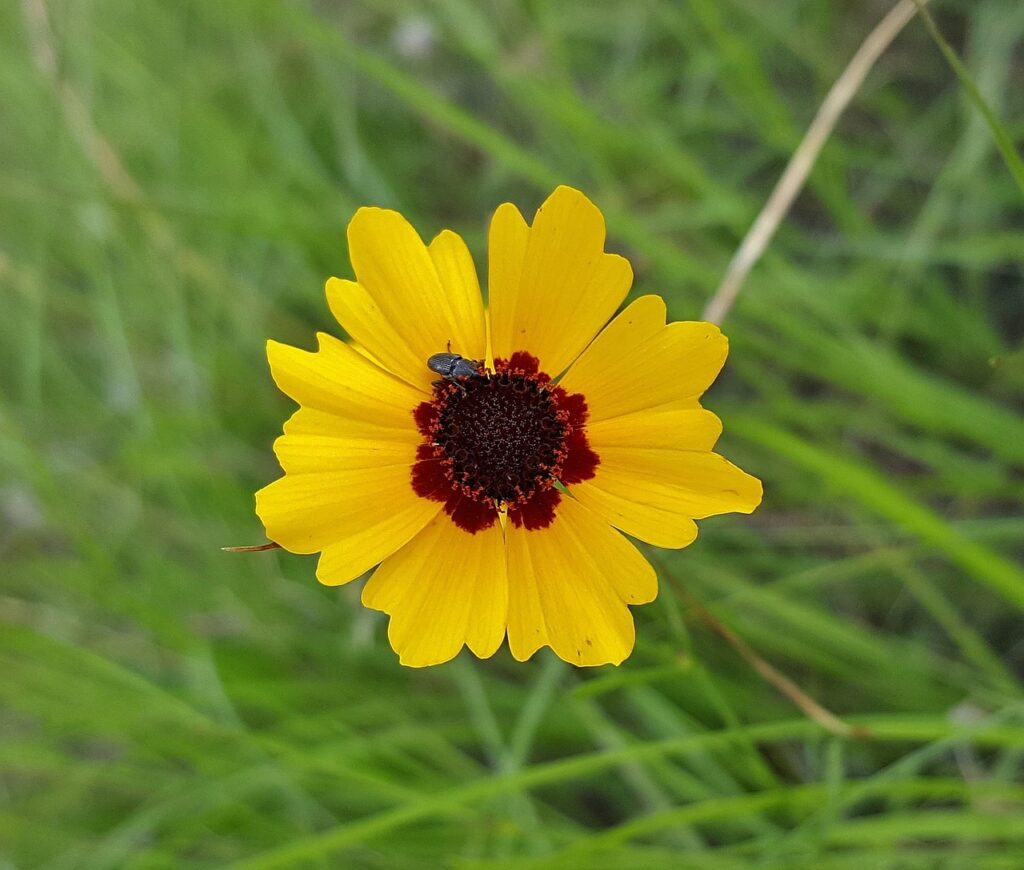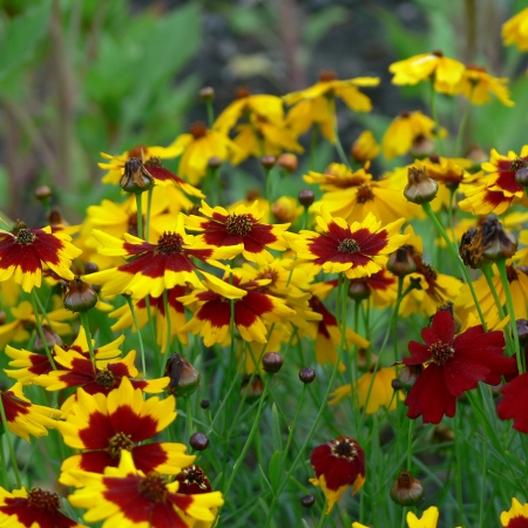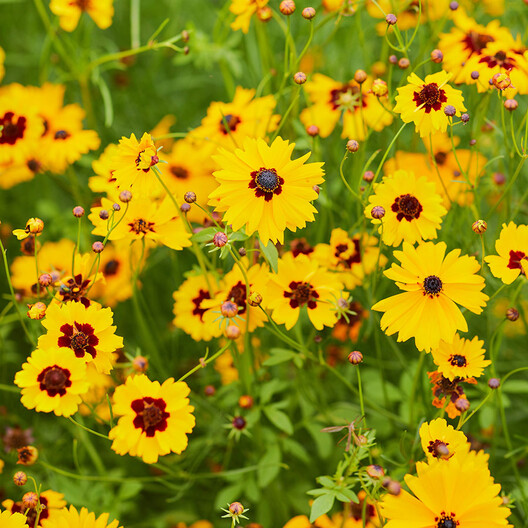
Golden tickseed, plains coreopsis
If you’re looking to save the bees, start with coreopsis. These native wildflowers make excellent forage for a wide variety of native bees, like carpenter bees, leafcutter bees, and long-horned bees. They’re also attractive to Sulphur butterflies.
These bright, cheerful flowers fit into any cottage garden, even if they’re a wildflower. They also make an excellent companion plant for vegetable plots. If you’re growing cucumbers, squash, or melons, plant some Golden tickseed for better fruit pollination.
You just can grow wrong when you plant native. While these flowers are normally home on the plains, they’re also native to the entire North American continent.
Their vivid yellow, orange, and brown blooms are a striking summer flower that is sure to lift your spirits. They’re drought tolerant and don’t require much in the way of feeding.

Benefits
- Critical forage for native bees
- Attracts butterflies and birds to the garden
- Drought tolerant
- Low nutritional requirements
- Establish well in poor soil
- Can bloom more than once a season
- Reseeds in the right conditions
- Flowers used as a natural dye for textiles
Description of Coreopsis tinctoria
Coreopsis is a fast-growing wildflower that can reach from 12 to 40 inches tall. You’ll find numerous flower heads on their delicate stems.
Blooms are bright yellow with maroon or brown centers. You’ll find numerous flowers on each plant.
Coreopsis is native to North America and has naturalized in China.

Tips for Germination
Direct sow Coreopsis in the garden in full sun in a well-draining area. Water the area before sowing and then cover very lightly and press seeds into the soil. Keep the soil moist to hasten germination.
If sowing indoors, press seeds into moist seed mix in cell trays and provide plenty of light. Coreopsis needs light for germination. Plant outdoors once the final frost date has passed and the plant has developed true leaves.
Care Tips
Grow in full sun and water as needed to keep the plant hydrated. But avoid any boggy areas – coreopsis need free-draining, even sandy soil.
Space coreopsis about 12 inches apart for best results. No fertilizer is required or recommended.
Deadhead flowers as they fade or use for cut flowers indoors.
Buy Coreopsis tinctoria Seeds Here

| Species Name: | Coreopsis tinctoria |
| Common name(s): | Tickseed, golden tickseed, coreopsis |
| Defining Characteristics: | Bright yellow and dark red wildflowers on tall stems |
| Temperature requirement: | Sow seeds at 70F |
| Watering frequency: | Keep moist until germination occurs then water as needed during the active growing period. |
| Lighting: | Full sun |
| Soil type: | Requires well-draining soil |
| Growth rate: | Grows quickly |
| Height: | 1-3 feet tall |
| Origin: | Native to North America |
| USDA Hardiness Zone: | Annual N/A |
| Toxicity Notes: | This plant is considered non-toxic to humans For more information please visits the ASPCA list of Toxic and Non-Toxic Plants list of Toxic and Non-Toxic Plants |
| Common Pests: | few |
| Common Problems: | Can be prone to disease if planted too closely |
| Perfect Potting Companions: | Excellent companion plant for cucumbers, summer squash, winter squash, and melons |
| Additional Notes: | Do not fertilize coreopsis |


